All About The Keto Diet: A Beginners Guide
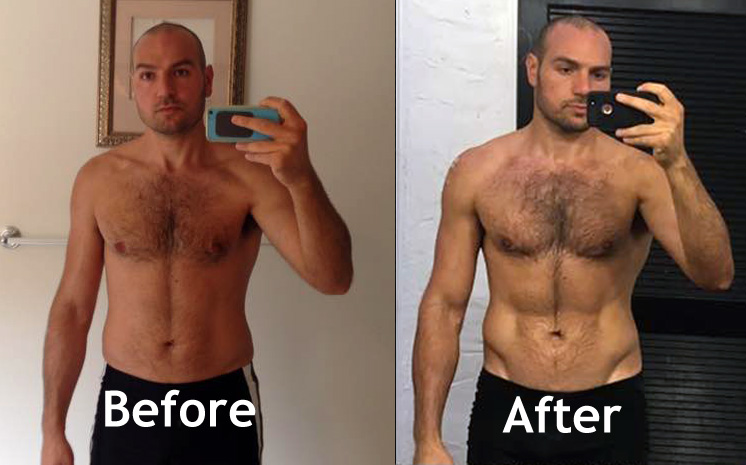
What you’re getting into: 9000+ words if you read them all.
How long it will take? Forever if you get distracted by… OH LOOK, CAT PHOTOS.
I’ve been writing fervently so strap in and FOCUS damn you, FOCUS!
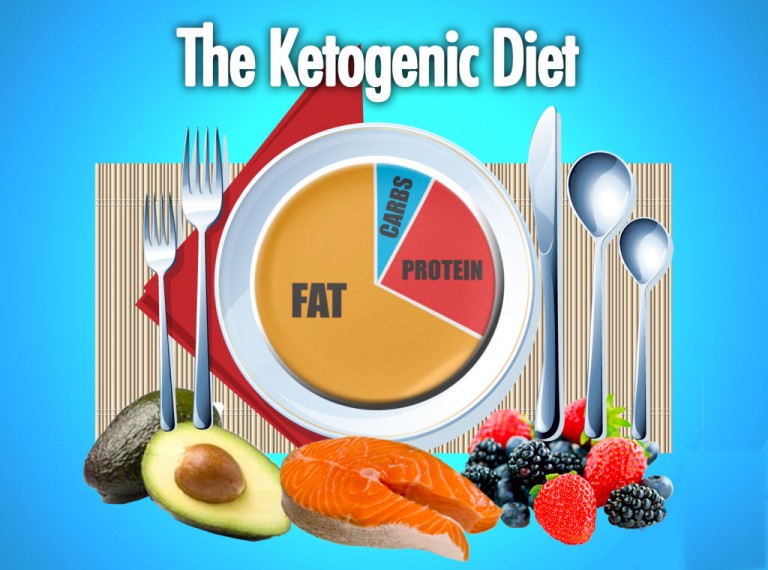
This is a follow up to my article: When is a calorie not a calorie? In there I say how for a couple years I mostly counted calories to deal with fat loss (or muscle gain) and now I’ve been refining that approach. I’ve been feeling how different macronutrient ratios (ratio of carbs, protein and fat) affect my body both mentally and physically. A diet high in carbohydrates (the standard american diet) seems to make appetite ravenous while a very low carb, high fat diet (ketogenic diet) seems to be very satiating and provides consistently greater mental focus throughout the day. As a result, it’s a more sustainable way of experiencing fat loss and muscle gain, without having to deal with much hunger or the psychological addiction to food. I absolutely love geeking out on this subject matter so get ready for a fat treat.
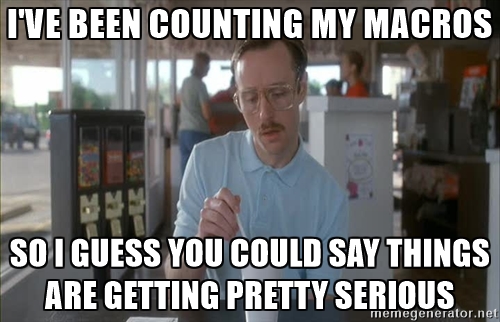
With the progress pics at the end of this article to prove it!
What is the ketogenic (keto) diet?
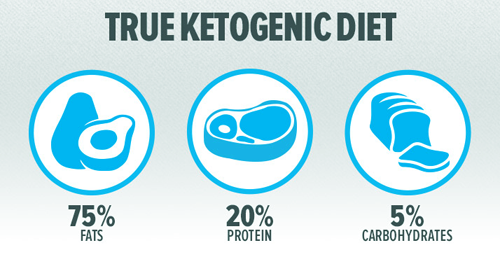
The keto diet is high in fat and low in carbs. It’s NOT high in protein.
All foods consist of three macronutrients (“macros”) in varying ratios:
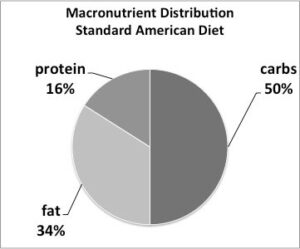
The Standard American Diet is high in carbs & fat.
The ketogenic diet is not intended to be a temporary diet for weight loss, although it works great for that, but it is more of a lifestyle change where you consistently and drastically reduce the amount of carbs you ingest. It not only makes you burn fat for energy (more on that below) but helps you become very aware of how rampant and ubiquitous carbs are in this day and age. Now that I have some experience with it, I feel confident to share with you what this diet is about. With that said, I don’t feel like an expert, relative to the geniuses who have been researching this diet for decades, so throughout this article I’ll be dropping their names for you to expand your understanding.
Why is it called ketogenic?
- The word ketogenic is made up of two words: keto- and -genic.
- The prefix “keto-” is short for ketones.
- The suffix “-genic” is the same as genesis, which refers to “the creation of something”
- So the word ketogenic literally means the “creation of ketones.”
- Ketones are created from the break down of fat for energy when the body doesn’t get enough carbs.
- When the body is creating ketones, it is said to be in a state of ketosis where fat becomes the main source of fuel for energy rather than sugar (glycolysis).
- I explain this in further detail below.
How is ketosis achieved?
Ketosis is achieved by practicing strict carbohydrate restriction consistently. The general limit is about 25-50grams of net carbs a day which is far lower than the typical 200-300grams most people ingest per day. (Net carbs are carbs minus fiber. More about that below.) Those carbs must be replaced with healthy fat sources. It takes a few days for ketosis to actually occur because you have a glycogen supply to get through initially, but one can reach ketosis faster if they exercise. This is discussed in greater detail in the sections below.
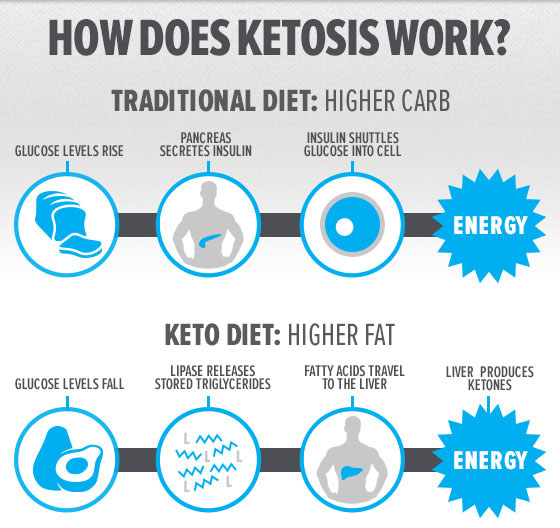
What are the benefits of being in ketosis?
The ketogenic diet was discovered in the early 20th century and was (and still is) a powerful solution toward patients suffering from epilepsy. In the early days, bodybuilders used to practice it without even knowing the mechanisms behind it by doing a “fish and water” diet. It is also the diet that humans historically adhered to naturally before refined sugars became so easily accessible.
The promises of a ketogenic diet are quite impressive:
- Helpful for metabolic syndrome (obesity) and preventing diabetes
- Increased meal satiety and appetite blunting. This diet is more satiating than a low-fat diet and tends to makes it easier to avoid caloric overconsumption.
- Greater rate of fat loss due to state of ketosis rather than glycolysis.
- Note: You literally become a fat-burning machine.
- Reduction or complete elimination of Type-2 Diabetes (Reduction in insulin resistance)
- Reduction or complete elimination of hypertension (high blood pressure).
- Improved lipid fat profile: LDL (the bad cholesterol) particle size increases which is a good thing. (The smaller ones cause more damage.)
- The SIZE of LDL particles may be more important than concentration of LDL cholesterol.
- Recent studies have shown independent relationships of levels of LDL size to risk of heart disease.
- Prevention of various cancers and reduction of cancer growths.
- The mitochondria of cancer cells are damaged and require 200x the normal amounts of glucose to replicate at rapid rates. They cannot utilize ketones and cannot survive in ketosis without the presence of excess glucose.
- Possible treatment for Alzheimers. (another study)
- Possible treatment for Parkinsons
- Improved memory for older adults
- Reduction or complete elimination of chronic systemic inflammation.
- A ketogenic diet has profoundly anti-inflammatory effects.
- Improved cardiovascular health
- Very high muscle-sparing effect. (Muscle loss is mitigated in ketosis even at a caloric deficit!)
- Proven treatment for epilepsy, more effective than current medications without the side effects.
- Endurance benefits: After you’re keto-adapted (2-3+ weeks at least), you will experience higher athletic performance, especially for ultra-endurance because you will never “hit the wall” or “bonk” due to glycogen depletion not being a limiting factor anymore.
- You could also hold your breath underwater for ridiculously long times. (Your mitochondria become more efficient when running off ketones.)
You can extrapolate that if it’s helping reverse the diseased conditions of people with Type 2 diabetes, cancer, heart disease, epilepsy, Alzheimer’s and so forth, that it may proactively help those of us who are not afflicted by those conditions!
Before I continue: The ketogenic diet is NOT a panacea
The truth is that there is not a single, perfect diet that works for everybody. In regards to this diet specifically, Dom D’agostino says that this diet is excellent for ~70% of people out there but ~30% of the population does not respond well to this diet. Btw, Dom D’agostino is the expert that originally got me hooked to trying keto. He calls ketones the 4th macronutrient in this podcast with Tim Ferris.
Weight loss is NOT guaranteed on keto: If you’re looking to lose weight, you should still be wary of the total intake of calories. You can still gain weight on a keto diet if you over-eat (like with any diet.) You could technically drink a gallon of coconut oil (that’s 30,000 calories) and still be technically on the “keto diet” but the reality is you’re less likely to eat as much once you break your addiction to carbs. Fat and protein are a lot more satiating and with the absence of carbs, your hunger may stabilize. But I still recommend people to use MyFitnessPal to log the food they eat, not to count calories, but to easily track how many net-carbs they’ve ate. The first time I started keto, it took me a few days just to transition toward the 50g net carb range and it wouldn’t have happened without tracking what I was eating. But once you know you’re consistently choosing the appropriate foods and avoiding all the inappropriate ones, you most likely don’t need to track anything.
Doctors reactions: Unfortunately many medical doctors don’t know much about this diet (or not a lot about nutrition in general) and may not be supportive of this change because they don’t know much about it. They are used to hearing ketones in the scope of ketoacidosis, which is a runaway condition that ONLY occurs in unmanaged Type-1 diabetics and has NOTHING to do with this diet. (The keto-diet is actually excellent at helping diabetics manage their condition.) If you’re unsure what to tell your doctor, it’s very simple: tell them you’ve cut out all carbs and sugars. If you have kidney or heart issues or taking medications, listen to their advice in case this diet is contraindicated in your case.
A Full Diet Break: While taking a full break from the diet from time to time is not mandatory, it’s advisable for the psychological and physiological reasons. I took my first break when I had to go on a road trip and wasn’t sure how to continue the diet, so I didn’t fret about it for that week. It’s recommended that you stay strict with the keto-diet for a couple months at a time, but it’s fine to take a break for a day or a week if need be. Also, when you do take a break, it doesn’t mean you should start eating carbs and only carbs for the sake of them being available to you again. Everything in moderation! (You’ll find the foods don’t taste as good as you thought anyway. Carbs aren’t all they’re cracked up to be.)
Why do you have to restrict the carbs so sharply? How does the body transition to burning fats for energy?
When it comes to energy metabolism, a hierarchy exists in regards to how the body creates energy:
With the presence of carbs, the body prefers to break down carbs first and foremost. It should be interesting to know that even though carbs are most peoples primary source of food, only 1% of your bodyweight is made up of carbs. Why is that? That’s because your body doesn’t have an ability to store large amounts of carbs. It can only store carbs (in the form of glycogen) in your muscles and some in your liver which amounts to only about 2,000 calories worth for an average male. With the glycogen stores of most people being constantly “topped off,” fats (and excess carbs) have no choice but to become stored as fat.
If you stop eating carbs, the body will start to break down the glycogen (carbs) stored in the muscles and liver for energy to maintain the appropriate blood glucose levels. It takes a few days for this glycogen supply to run out which is why one must be strict with the carb-restriction, and when it does run out, the liver will start making the enzymes necessary to break down fat for energy and turn them into ketones. Ketones are like water-soluble fat molecules that can cross the blood-brain-barrier and provide energy for the brain. There is this myth where people say that you MUST eat carbs because the brain can only survive off carbs. What they don’t know (or conveniently forget to mention) is that the brain operates perfectly on ketones as well.
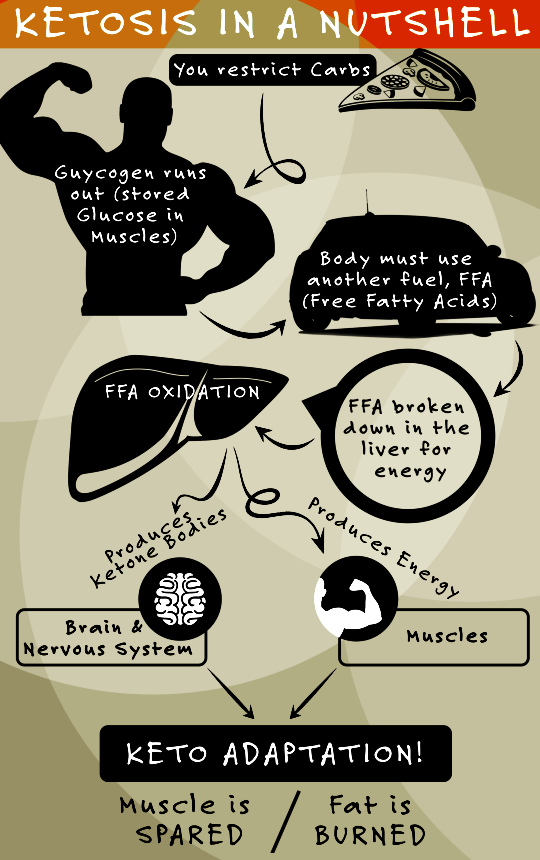
Evolutionarily speaking it was very common for humans to go a few days without food and be in a state known as “starvational ketosis” due to an absence of food. What we are doing in this scenario is going into “nutritional ketosis” due to an absence of carbs. We’re still eating, but we’re avoiding carbs and the body creates ketones as a result. It’s a way of metabolically hacking into your nutritional processes in a world full of junk foods.
Fun Fact: You’ll know you’re in ketosis when your urine/pee smells funny. That’s because your body is breaking down fat and acetone is one of the byproducts. Your breath may even smell fruity or like alcohol because the acetone volatilizes from the blood stream and into your lungs. In fact, breathalyzers may be able to detect how deeply you’re in ketosis nowadays!
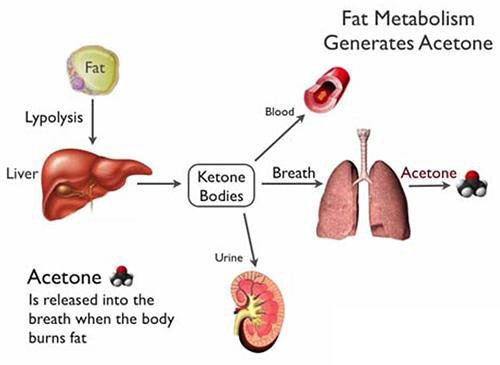
So… What are carbohydrates? Don’t we need them for energy?
Carbs are sugar. Sugars are carbs. There are simple carbs (monosaccharides) and complex carbs (polysaccharides). There are also sugars found naturally in foods and extra sugars added artificially to foods. In the context of a ketogenic diet, they’re all pretty much the same because the body eventually breaks them down into their simplest forms regardless. (The carbs that you will eat will come almost entirely from veggies or nuts on this diet.)
Despite your body needing to break down carbs first and foremost when they are ingested, carbs are NOT an essential nutrient. An essential nutrient is one your body needs to survive because it won’t be able to make it on its own. But your body readily creates sugar from fat and protein to regulate blood sugar levels.
Many people think they need carbs to perform at their very best performance-wise, but that’s not true either. It takes a few weeks, but after someone becomes completely adapted to the ketogenic diet, they become very, very efficient at burning fats for fuel and the bandwidth or throughput within which your body can do this at is great. It’s been ingrained in us that we need carbs to survive, or perform at our peak as athletes. We see sugar as energy. We see athletes drink Gatorade, so we think we can’t perform at our best without it. We almost rely on it as a crutch. But when you’re keto-adapted you are not chained to the hypoglycemic rollercoaster.
Last but not least, carbs are found in varying degrees in ALL plants. The only way to be completely carb-free is to be a pure carnivore. But the keto-diet is not about being a carnivore. You still eat carbs, but you must generally stay below 50 grams of net carbs, which is the total amount of carbs minus the fiber.
What is fiber?
Fiber is also a carbohydrate, but we cannot digest it or break it down, so it simply passes through and we poop it out. Fiber is what helps us poop without feeling constipated and is something that you will eat plenty of on a keto diet. It also acts as a natural buffer, slowing down the digestion of carbs and lowers the insulin spikes that may occur. Last but not least, it’s food for the bacteria in your gut which keeps them (and you) happy as well.
Fun fact: Animal cells don’t have cell walls. Only plant and fungi (mushroom) cells do. The cell walls are made of cellulose, which is an indigestible complex carb known as FIBER. When we chew plants, we crush the cell walls and digests the innards of the cells and the cell walls exit as part of our stool as indigestible fiber. For a more nerdy explanation based on biochemistry, read my blog post on carbohydrates.

Fiber is a carb but we can’t break it down, so that’s why we subtract fiber from our total carb intake to get the net carbs.
What’s wrong with carbohydrates?
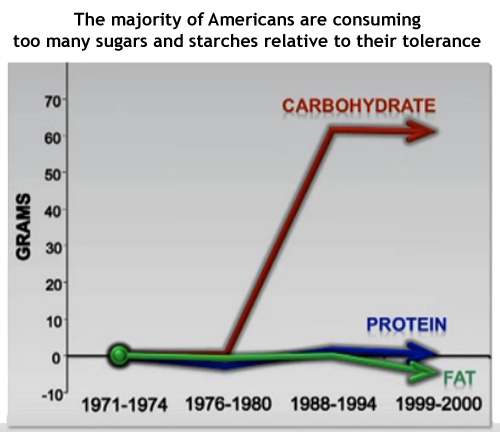
Insulin resistance can be regarded as carbohydrate intolerance. Well-formulated ketogenic diets counteract insulin resistance.
If you’re overweight, prediabetic or a diabetic (these categories envelope 75% of the US population), then you most likely have an intolerance to carbs which is synonymous with insulin resistance. Carb intolerance is the same analogy as gluten intolerance except instead of gluten (which is a protein found in wheat) affecting you negatively, it is instead an intolerance to all carbs.
What is insulin resistance? Insulin resistance is the same as carbohydrate intolerance. Every time you eat a bunch of carbs (which pretty much everyone does every few hours) your bloodstream becomes inundated with sugar and the body must quickly get rid of this sugar from the blood stream because it is dangerous. The only way for the sugar to leave the bloodstream and be oxidized and be used for energy (which it MUST immediately) is by the pancreas creating insulin because insulin is the main hormone that helps drive sugar into cells to be used for energy.
With 50-65% of the Standard American Diet being carbs, your pancreas must constantly create insulin to subdue the spike in blood sugar. Eventually the insulin becomes less effective (insulin sensitivity goes down, insulin resistance goes up) and the body cannot control the carbs as well. Because the insulin levels are constantly elevated due to the constant pouring of sugar into the body, the pancreas eventually becomes overworked and damaged and then you may become a diabetic and have to injection insulin into yourself multiple times a day. Also, every time your blood sugar spikes, it is causing an inflammatory response that damages the lining of your arteries. This is a massive issue that leads to strokes and heart disease and the number of prediabetics are rising dramatically. This is the biggest issue of our lifetime.
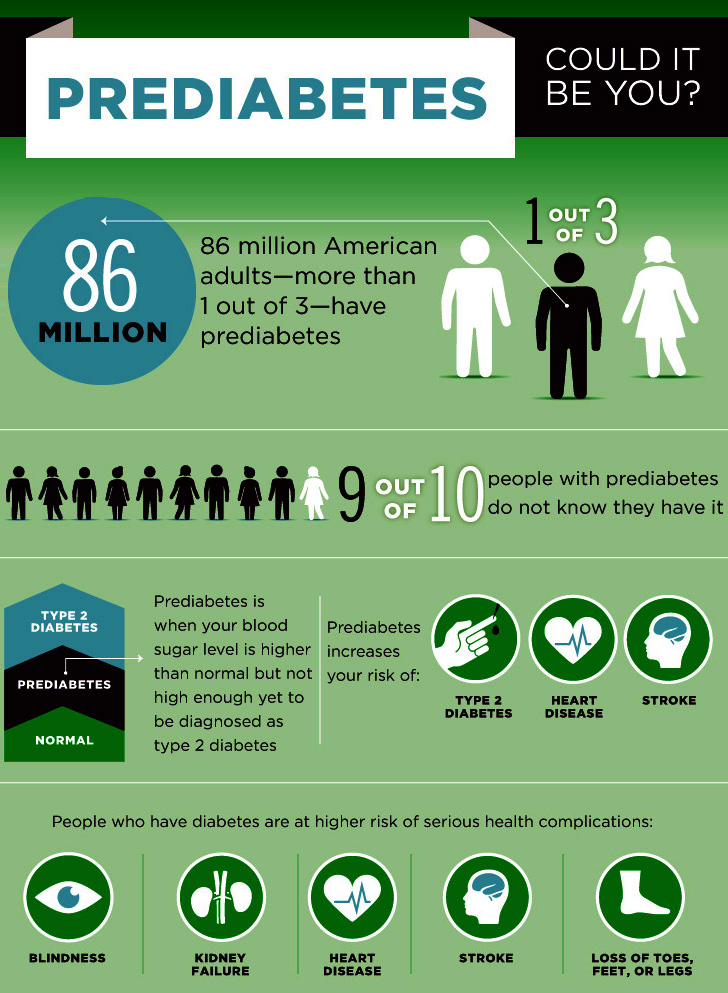
People think diabetes is an easy issue to handle. You think you just need to inject insulin and you’ll be good? No, it’s not that simple. Do you know who gets the most amputations? People from accidents? Acute trauma victims? No. Diabetics are the number one people that receive amputations. Why? Because when they get a cut or nick on the bottom of their foot, they can’t feel the foot has become infected because they have peripheral neuropathy (numbness due to nerve damage due to high sugar levels damaging their tissues) and by the time they find out, their foot needs to be amputated. This is REAL, people.
And what happens to the fat that you just ate along with the carbs? When carbs are present, it means fat MUST be stored. Your body cannot and will not be able to burn fat with the presence of carbs!!! Your body CANNOT breakdown fat in the presence of insulin. Fat breakdown is inversely proportional to insulin concentration.
To learn more about insulin resistance, watch at least the first 10 minutes of this talk by Dr. Jeff Volek, who is not only a Registered Dietitian and Exercise Scientist but a prominent researcher and one of the only RD’s who openly endorsed low-carb/ketogenic dieting in the 1990’s.
Which foods are high in carb’s and therefore prohibited from the keto diet?
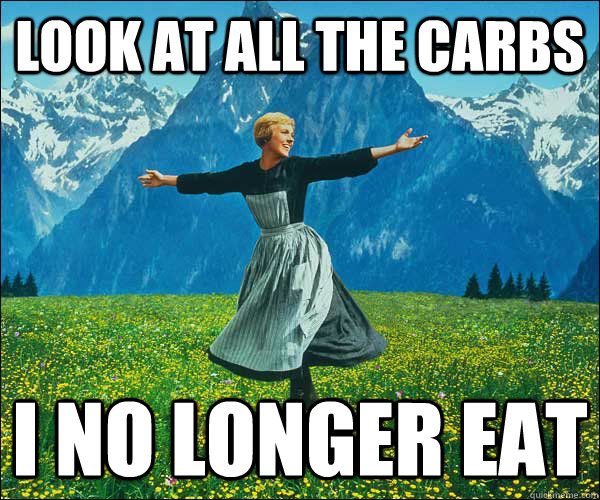

- ALL Grains are off limits, regardless of them being “whole” or “refined” such as:
- Wheat
- Rye
- Oats
- Corn (this is in most foods nowadays whether you realize it or not in the form of high fructose corn syrup; HFCS)
- Barley
- Buckwheat
- Quinoa
- Potatoes
- ABSOLUTELY NO bread, rice, pasta, cereal, or pizza whatsoever.
- However, there are keto-friendly substitutes that mimic these foods!
- This should be easy if you’re familiar with the paleo diet anyway.
- No starchy vegetables
- Potatoes
- Yams
- Corn
- Carrots
- Beets
- Beans
- Peas
- No Potato Chips or “Vegetable” Chips or “Pita” chips.
- Sugars and sweets/pastries
- No cookies, crackers, ice cream, puddings, cakes, donuts, soft drinks, etc. None of it!
- No milk chocolate
- Fruits, fruit juices, and dried fruits (and jams and honey) are almost purely sugar and not low in it either!
- The only fruits that are acceptable (because they’re very low in sugar) are berries (blueberries, strawberries, raspberries) and only about 4oz TOTAL in a day.
- Avocado’s are totally acceptable as well because they’re actually quite fatty.
- (Yes it’s crazy that I can’t eat a banana, but a banana is a tropical fruit high in sugar. One banana has 21g of net carbs, which is nearly the alotted amount for the DAY on a keto diet! Half of the sugar in any fruit is fructose which is the most anti-ketogenic sugar available. It cannot be metabolized anywhere but the liver because nothing else has the enzymes to metabolize it, therefore it refills liver glycogen rapidly. It is guaranteed to take you out of ketosis, alongside being harmful to the liver.)
- Milk
- Reduced/Low-Fat Foods must be avoided.”Low Fat” cream cheese, for example, has added sugar to make it taste better. Most “low fat” products do. Buy the regular, full-fat versions of things!
- No Beer
- Glass of dry red or white wine are acceptable.
- No Sugary Alcoholic Drinks
- For hard liquor: unsweetened spirits of vodka, rum, gin, tequila, whiskey, scotch, brandy, cognac are acceptable.

Goodbye always-too-sweet Armenian pastries! (Ironically they don’t taste very good anymore. And bread tastes like cardboard.)
Now, at this point, a lot of people will say “I like food too much.”
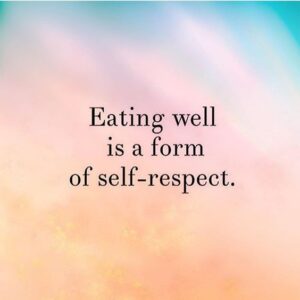
One must eat to live and not live to eat. -Moliere
Eating is something you do MULTIPLE times a day EVERYDAY for your entire life. It is the #1 thing that can make or break your health without the use of drugs. Think about it: You are putting pounds of stuff IN YOUR BODY and your body has to process them ALL. If they’re constantly causing inflammation, increasing your chances of heart disease, stroke, diabetes and obesity, you still going to tell me you like food too much to care about your health? Maybe some people don’t have as strong of a will to live as others. I don’t know. But when people tell me they like food too much, it’s almost like they’ve already given up.
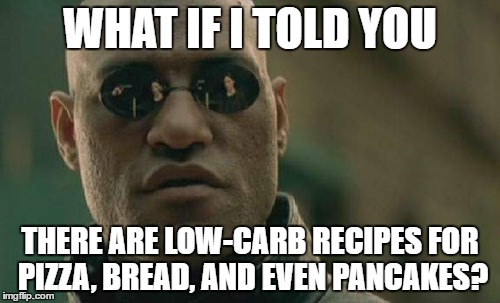
Learn to Believe! Don’t just give up!
For example: These are surprisingly good and taste great:
- Bread: Oopsie Bread Recipe (A delicious low carb bread recipe!)
- Pizza: Use either a Cauliflower Crust or Almond Flour Crust (both are chewy and crispy)
- Pancakes: Keto Pancakes using cream cheese and coconut flour!
- Crackers: Flax seed crackers recipe
- Ice Cream: HaloTop is the best low-carb ice cream that you could buy in a store. Breyers also has “CarbSmart” ice creams in the stores if you look hard you may find it.
How do I know how many NET carbs a food has?
To know how many carbs a food has, you have to simply get good at reading the nutrition facts of foods or googling the information. It’s very simple and I will show you how below with the example of an Avocado:
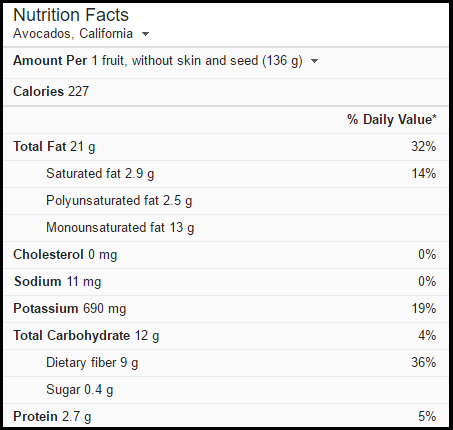
- The above label is for 1 avocado that weighs 136grams. (Note: Large “Hass” Avocados weigh between 280 and 330grams, so this would be half a Hass avocado.)
- Next, you see this half-avocado has 227 calories, 21 grams total fat, 12 grams of total carbs and 2.7 grams of Protein.
- On a keto diet, we are mostly concerned with Net Carbs:
- Net Carbs = Total Carbs (12g) minus Dietary Fiber (9g).
- So the net carbs are 3 grams in this case.
- An avocado is a perfect, keto-friendly food. It is not only very low in carbs but also has a great fat profile due to it being mostly monounsaturated fats and lots of fiber.

If there is no nutrition label (like there often isn’t for groceries or unpackaged foods), you could simply google “Avocados Nutrition Facts” on your smartphone and google will spit out the above data for you immediately.
- Side Note: It’s interesting how google is getting better at parsing the information from other websites. If you google the weather, nutrition info, recipes or wikipedia type stuff, google will present that information to you without you having to go to the site anymore and that’s been siphoning traffic away from those sites.
So what do you eat if you don’t eat carbs?”
If you are putting a limit on the number of carbs, you must make it up with the two other macros: fat and protein. This would be the perfect time to remind you that the ketogenic diet is NOT a high-protein diet. It only requires a moderate amount of protein, most likely an amount you are already ingesting. The difference here is that most of your calories will be coming from FAT!

But isn’t fat… bad?
Since the USDA came out with dietary guidelines to have a “Low Fat, High Carb Diet”, the prevalence of obesity, heart disease and diabetes have only increased. People started to correlate the eating of fat, with becoming fat. But you are NOT what you eat. The fallacy that fats are bad was based on shoddy evidence and has ruined many a peoples lives because of it.
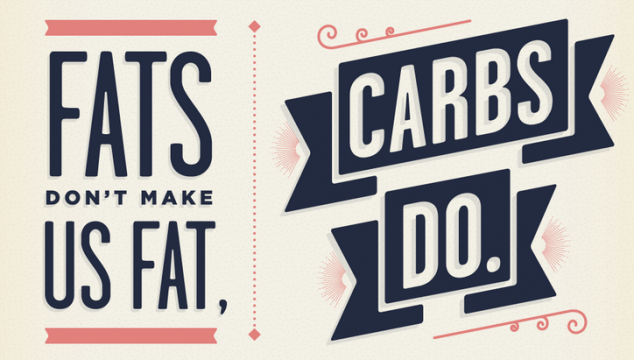
The governments “Low Fat” recommendation was created without a shred of evidence of it being beneficial. (Source)
For example, dietary cholesterol (cholesterol that you eat) does NOT increase blood cholesterol levels. Also, the traditionally called “artery clogging saturated fats” turn out to have no link to heart disease and are not proven to clog arteries. What is most interesting about a low-carb diet is that blood levels of saturated fat will go down (despite eating way more of it) because the body promptly must break it down to CO2 and water! It is now understood that atherosclerosis (the hardening of arteries) occurs due to the presence of high sugar which inflames the lining of the arteries! (Sorry for the exclamation marks, but this is a big deal. It flips everything we know about “diet” on its head.)
Dietary Saturated Fat (Fat that you eat) vs Plasma Saturated Fat (Fat in your blood stream)
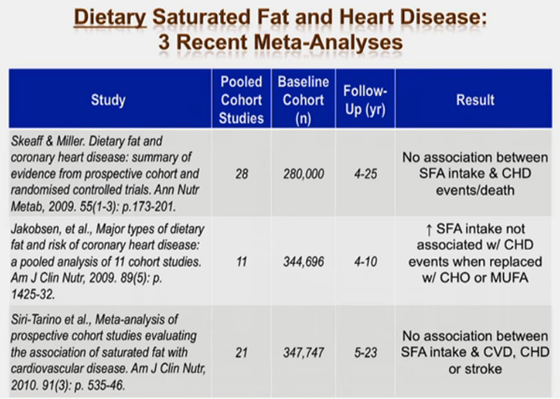
Three MASSIVE meta-analyses show that DIETARY saturated fat and coronary heart disease (CHD) have no association. (Source links: first, second and third.)

PLASMA Saturated Fat (fat level in your blood), on the other hand, DOES show an increase in heart disease, diabetes and even some forms of cancer. (Sources: 1, 2, 3, 4)
So if the intake of saturated fat is not linked to heart disease, but a high amount of it in the blood stream is, then the question is, what’s contributing to this increased circulation of fat in your system?
When you’re over-consuming carbs relative to your tolerance and restricting fat intake, your liver turns those carbs into fat (packaged into LDL particles, the unhealthy fat) and we know that’s associated with insulin resistance. So again, you are NOT exactly what you eat. Dr Jeff Volek states this in his presentation cued right here. He also continues to talk about the studies he’s personally conducted that show how a ketogenic diet decreases the levels of saturated fat in your blood despite eating a diet high in fat!
Fun Fact: In the 1940’s pigs were temporarily fed coconut oil (which is mostly saturated fat) hoping to fatten them up with this relatively cheap but high calorically-dense food source coming from the Philippines and the ranchers were PISSED cause it made their pigs more lean and active! There’s a reason why chickens and pigs are commercially fed GRAINS today: It fattens them up the fastest!
If you want to understand the history of why the current USDA guidelines are so messed up, watch or listen to this talk by Tim Noakes who is another expert in regards to this field.
Okay, so you eat mostly fat, some protein and very little carbs… But what does that mean in terms of real food? What does your day consist of?
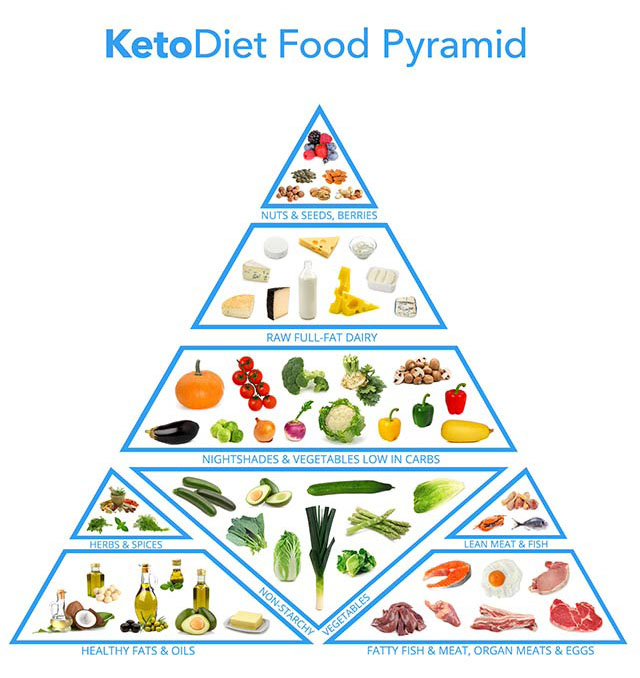
- Non-Starchy Vegetables could be enjoyed with every meal:
- The keto-accepted vegetables are always the DARK GREEN, LEAFY vegetables such as spinach, broccoli, leeks, brussells sprouts, asparagus, chard, kale, bok choy, green beans, lettuce (any variety), collard greens, snap peas, snow peas, radishes and so on.
- Other common vegetables such as cauliflower, tomatoes, onions, peppers, cucumbers and eggplants can be eaten too, but must be done moderately as they’re not very low in net carbs as the other stuff listed above. But, I know those foods are essential to cooking so I still use them, but use less of them. For example, I still sautée or grill onions but I use slightly less than I used to.
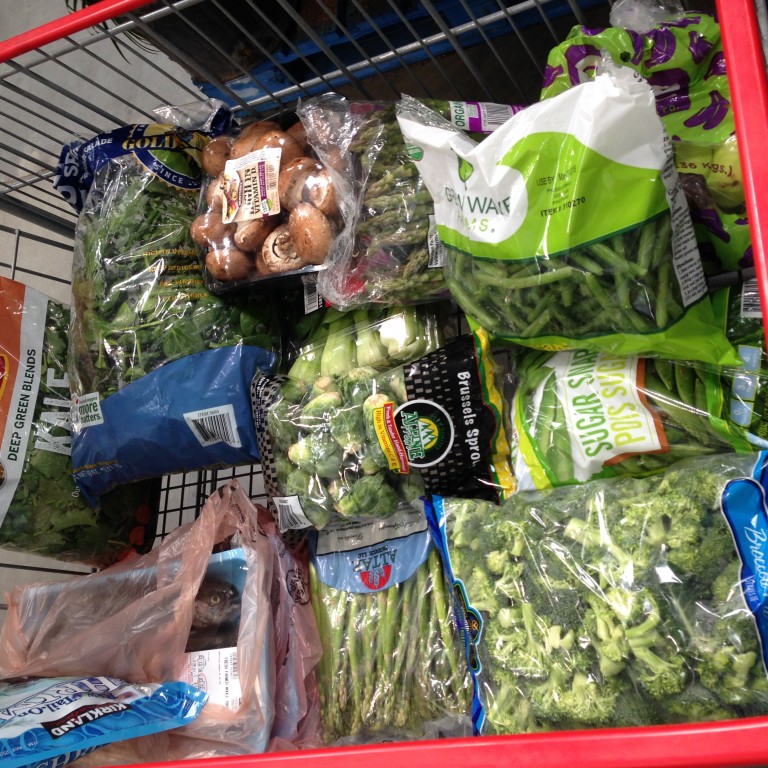
Dat keto-cosco shopping cart life.
- Nuts
- Macadamia Nuts (so good for you with an amazing fat profile!)
- Almonds
- Other nuts tend to be higher in net carbs but can be had sparingly. For example, cashews and peanuts (and peanut butter!) can be eaten too but you cannot go to town on them in the same manner as you can with macadamia’s and almonds.
- Animals
- Eggs (prepared however way you want)
- Seafood: sardines (in olive oil!), salmon, oysters, fish of any kind, really.
- Meat: Chicken, turkey, beef, sausages, bacon (yes, bacon is fine), deli meats, broth, etc
- Preferably wild caught fish, not farm raised.
- Preferably grass-fed beef and free-range chicken (they have a better omega 3 to 6 ratio)
- Preferably fatty cuts (like chicken thighs instead of chicken breast) and organ meats such as liver.
- Pâté
- Cheese of any sort
- Hard and soft cheeses. This includes cream cheese and sour cream.
- Dairy
- You must read the nutrition labels but lots of dairy products are acceptable.
- Cream cheese, sour cream, heavy cream, it’s all good as long as you don’t get the “low fat” versions.
- Kefir cheese/Lebne is fine
- Yogurt is interesting: If you glance at the nutrition label, the carbs listed may seem high but they originate from lactose (milk sugar) in the milk before the yogurt was made. But over half of this is turned to lactic acid during the fermentation process, which is easily absorbed without raising your insulin level. Make sure the yogurt is plain, not vanilla.
- Fruits
- Avocados
- Berries (Blueberry, Strawberry, Blackberry, Raspberry) about ~4oz total per day, which would be like ~40 blueberries, I like to eat these frozen.
- That’s pretty much it for fruits. Yes I know it’s crazy I don’t eat bananas while on keto. They are a tropical fruit high in sugar, 21g of sugar in a banana!

Having yummy berries are acceptable on keto and jam packed with nutrients!
- Healthy Fats & Oils
- By far the best oils are Olive Oil and Coconut Oil
- Yes this means olives, coconut and coconut flour are okay too!
- Butter and Lard are totally acceptable too.
- Avoid Corn/Seed Oils (Note: most vegetable oils are actually seed oils)
- Mayonnaise, for example, is fine on keto, but the store-bought stuff is made of canola oil. It’s much better you make your own with olive oil!
- As mentioned above, when buying canned-fish like sardines, get the ones in olive oil, preferably (not canola oil or plain water).
- By far the best oils are Olive Oil and Coconut Oil

- Mushrooms are awesome as they tend to be low in net carbs.
- Small piece of very dark chocolate (80% or higher) can be fit into the diet as well if you’re into that.
- Thai or Curry Soups can often easily be keto-friendly. (Bok Choy, Bamboo shoots, basil, these are all keto friendly)
- Sweeteners that should be used are Stevia and Erythritol which are naturally occurring “sugar alcohols” and not artificial sweeteners.
- Avoid Sucralose (Splenda), it will mess with hunger signals and leave you wanting to eat more.
How sustainable is such a restrictive diet? How do you eat out?
When I first started this diet, I thought it wasn’t very sustainable due to how restrictive it was. The first time I did this, it took me about 4 days to transition from eating 150-200g carbs down to only 50g net carbs. I was logging the food I eat to know how many net carbs I was at and what it would take to get there. (That’s not necessary, but recommended! It’s a learning experience!)
I was able to sustain the diet for about a month, then I had to go on a road trip that included camping and realized this was going to be quite challenging, so I decided to not fret about it and took a break for 2 weeks from the keto-diet. Then when I returned home, I went back on keto and I’ve been going almost 3 months solid while adhering to the macros. I even went out on camping trip again, and a separate road trip and was able to remain in ketosis the entire time because I was much more experienced this time.
Now, it’s only becoming easier and easier to avoid carbs and I don’t need to log the foods I eat to know I’m in ketosis. I know what foods are off-limits and what’s acceptable and that makes it easy to know that I’m eating very little carbs. However, with that said, I do want to take a break and eat some carbs every 2 months now.
- I thought I could never eat pizza. Turns out I was wrong. There is a keto-alternative to EVERYTHING. I now make pizza at home. Instead of a flour crust, I use cauliflower rice (cauliflower in a blender) and it’s shocking how much it tastes exactly like bread after it’s baked in an oven.
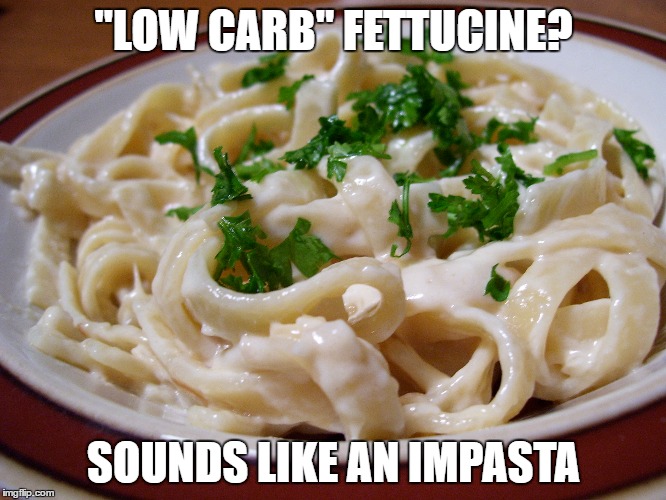
This keto-friendly Fettucine Alfredo Pasta Recipe is SO SIMPLE and YUM.
- I thought I could never eat cereal again. I found this thing called Textured Vegetable Protein (TVP) that is pure protein and it mimics frosted flakes if I simply add some Erythritol (a natural ‘sugar alcohol’ sweetener) over it and eat it with unsweetened almond milk.
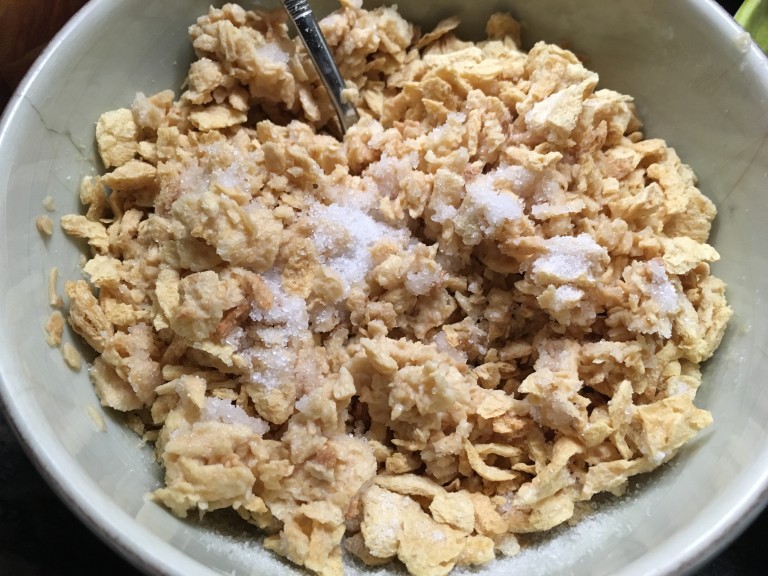
TVP + Erythritol + Unsweetened Almond Milk = Keto Frosted Flakes
- Foods that call for being fried and battered with Panko bread crumbs (a big no no): If you get fried pork rinds (chicharonnes) and crush them, it’s the perfect replacement for the bread crumbs.

Eating out is definitely one of the more difficult things to do but not impossible. Fast food products tend to all be high in both carbs AND fat simultaneously. For this reason, I try to avoid eating out as much as possible, but it’s actually not too difficult to find an option that works at any decent restaurant.
- Most restaurants have decent options for salads that will be low in carbs.
- If you’re at a burger joint (In N Out), tell them you want it protein style with the lettuce wrap instead of the buns.
- If you’re at a burrito joint (Chipotle), tell them you don’t want the wrap but the bowl. No rice and beans. But double carnitas, double fajita veggies and add guacamole if you want.
- My favorite resource is to go to r/keto and /r/ketorecipes and use the search feature. Like, if I have a lot of sour cream and I want to know what to do with it, I search for sour cream and see what ideas I can get.
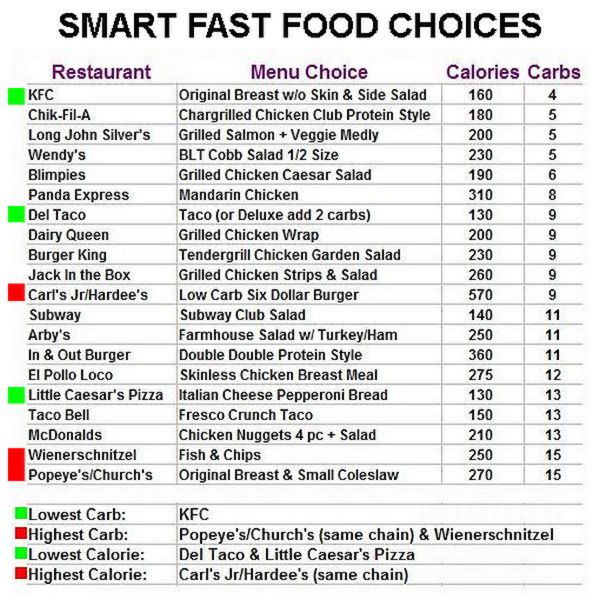
This image makes for a good quick reference.
Apps: There’s also a site and app called KetoFinder that will give you the lowest-net-carb options at every fast food place! And also another app called Calorie Cap which allows you to search the restaurant options based on the macros you set!
Can you get all the proper nutrients off of it? How does one create a well formulated keto diet?
Yes you could get all the nutrients! Eggs, seafood, nuts, vegetables and meat have ALL of the micronutrients you need within them. The keto diet will often times actually add to the diversity and nutrition because you’re replacing foods that are high in carbs and very low in nutrition (read: rice, noodles, crackers, potato chips, etc).
Here’s a list of vitamins & minerals and the keto-friendly foods that contain them:
-
-
- Vit A: liver, cod liver oil, broccoli, butter, kale, spinach, collard greens, some cheeses, egg.
- B1: pork, sunflower seeds, asparagus, kale, cauliflower, liver, and eggs.
- B2: asparagus, cottage cheese, meat, eggs, fish, and green beans.
- B3: liver, heart, kidney, chicken, beef, fish (tuna, salmon), eggs, avocados, leafy vegetables, broccoli, asparagus, nuts,mushrooms.
- B5: meats, broccoli, avocados.
- B6: meats and nuts.
- B7: egg yolk, liver, some vegetables.
- B9 (aka folate or acid folic): liver, sunflower seeds, avocado, broccoli, dark leafy greens, asparagus, nuts, cauliflower.
- B12: fish, shellfish, meat, poultry, eggs, and dairy products.
- C: peppers, liver, kale, broccoli, cauliflower, strawberries
- D: produced in the skin after exposure to ultraviolet B light from the sun or artificial sources. Also found in fatty fish, eggs, beef liver, and mushrooms.
- E: almonds, avocado, eggs, leafy green vegetables.
- K1 (plant form): leafy green vegetables, avocado, Brussels sprouts, parsley.
- K2: egg yolks, butter, cheese, fermented foods (natto, liver pate)
- Omega 3: salmon, tuna, halibut, oysters, avocado, spinach, kale, walnuts.
- Calcium: almond milk, cheeses, spinach, broccoli, clams, beef.
- Iron: clams, oysters and organ meats like liver, also spinach.
- Zinc: Seafoods like oysters are also zinc-rich, along with spinach, cashews, and dark chocolate.
- Chromium: Processed meats, green beans, romaine lettuce, broccoli, nuts, and egg yolk.
- Magnesium: dark leafy greens, nuts, seeds, fish, avocados, dark chocolate.
- Potassium: almonds, beef, blackberries, broccoli, Brussels sprouts, clams, salmon, tuna, turkey, avocado, spinach, kale, beef.
- Phosphorus: cheese, nuts, veal, mushrooms, scallops, sardines, salmon, shrimp.
- Sodium: salt, cured meat, some cheeses, pickles.
- Fluorine: pickles, spinach, asparagus, avocados, brussels sprouts, cauliflower, cucumber, green leafy vegetables, nuts (especially almonds), seafood, tinned fish.
- Pantothenic Acid: animal liver and kidney, fish, shellfish, pork, chicken, egg yolk, mushrooms, avocados, broccoli.
- Manganese: seafood, leafy greens, hazelnuts
- Copper: leafy greens, including turnip greens, spinach, Swiss chard, kale, and mustard greens, walnuts, oysters and other shellfish and organ meats (kidneys, liver).
- Selenium: brazil nuts, seafood, fish, pork, beef, lamb, chicken, turkey, mushroom.
- Source link of this list
-
There are many details one should implement to make this a well formulated ketogenic diet.
-
-
- Keto-flu may occur and is solved by having some bullion or broth.
- In the first few days, you MAY experience flu-like symptoms (stuffy nose, headache) known as the keto-flu. Many people say these are literally withdrawal symptoms from carbs. Almost always the solution to the keto-flu is to get more electrolytes in your system and you’ll likely feel instantly better. Interestingly enough, if you’re in full ketosis and you eat carbs, you might get flu-like symptoms again as well. (It makes it really obvious how pro-inflammatory some carbs are.)
- Keto-flu may occur and is solved by having some bullion or broth.
-
On this diet it becomes more important to ensure you’re getting more sodium, potassium, and magnesium.
- The kidneys will tend to excrete these more than retain while in ketosis.
- Everyday you need:
- 3-5 extra grams of sodium/salt (double the usual recommendation, so don’t be afraid of salt)
- 1 gram of potassium
- 300mg of magnesium
- This is often solved by supplementing with chicken or beef broth daily.
- If you are on the go or do not have broth, then use this chicken bullion powder (it’s delicious!) and mix it with water and enjoy!
- Instead of using regular iodized salt, get Morton Lite Salt or AltoSalt cause it has half the sodium and the ratio allows you to get more potassium in. (Note: If you have a history of kidney failure, heart failure or diabetes, or are taking medications, ask your doctor if this is okay.)

Broth is practical for me because I always boil chicken for my dog and I drink a cup or two of the broth daily or use it as a base for any soup. It’s the best!
- For the magnesium, it’s recommended you take a supplement.
- This is arguably the most important supplement you need on this diet.
- Many people are deficient in magnesium and need more of it as they get older and it takes at least 20 days of daily intake for the magnesium to be repleted in the body.
- Order this magnesium supplement and take 2 a day. It solves sleep issues for many as well.
Someone may be wondering how you’re getting Vitamin C if you’re not eating fruits like oranges. Well, truth of the matter is that many vegetables have vitamin C and the most interesting part to me is that the less carbs you have in your system, the less vitamin C you need because glucose competes with Vitamin C for access to the same metabolic pathways! (Source)
It’s also recommended you get blood work done after 6 months to check your overall biomarkers and see how your body is doing. Note: Many people will undoubtedly look like they are doing worse during the first couple months of keto because there’s so much free-fatty-acids being released into the blood stream. Until the body is fully “keto adapted” and the weight is stabilized, lipid levels (triglycerides) may look elevated, so definitely don’t be alarmed from a single test! (Many researchers got their data all wrong by blood-testing only 4 days into a keto-related-study and assuming those results were accurate in the long run.)
Fat profile: I’ll explain how to read fat macros in another blog post but it’s not something you should fret about. Just like ALL diets, you should avoid trans-fats. If in the ingredients you see the word “hydrogenated” oil, you should cuss at the manufacturer and put it back on the shelf.
Dr. Stephen Phinney has a great presentation here on how to go about customizing this diet to your needs:
So far I presented to you some links by Dr. Jeff Volek and Dr. Phinney. Well, these two amazing individuals wrote a book together. It’s one of the best modern books on how to do a low carb diet. They explain the practical ways to go about this diet, including recipes and ideas on how to perfect the diet to your needs.
- I highly recommend this book: The Art and Science of Low Carb Living
- And this one if you are active or athletic: The Art and Science of Low Carb Performance
But I can’t afford this! Isn’t this type of diet expensive?
While it’s true that carbs are definitely, by far, the most easily accessible of all foods. What is not true, however, is that a high fat diet is much higher in cost. If you do any sort of meal-prep, it will definitely come out to the same cost, if not cheaper cause you’re not eating out as much. Here’s an example of a person who made 2 weeks worth of lunch in under 5 minutes for $1.72 a meal using chicken, broccoli, and ready made alfredo sauce (which is basically butter, cream and cheese, all perfectly keto friendly).
When it comes to buying protein sources from animals, you actually save a lot of money because you don’t buy the chicken breast, but instead go for the cheaper chicken thighs and legs. Instead of buying steak, buy organs such as liver and prepare it like a G. It’s like a super-vitamin in meat-form, and it’s cheaper!
Personally, I never used to buy avocados because they cost $1-1.50 each in most stores AND take days to ripen so I couldn’t enjoy them immediately. I also never used to buy macadamia nuts even though I loved them because they were the most expensive nuts. Well, now I buy avocados AND macadamia nuts and it turns out these foods are quite filling and they last me quite a while. Just the fact that I know macadamia nuts are expensive makes me aware that I can’t eat these until the bag ends. Hell, I tried to do that with almonds and failed miserably. My jaw muscles cramped up and I couldn’t continue to eat them even if I wanted.
Hell, if anything, I’ve saved a ton of money by simply not eating out as much and never buying foods on the go or stopping by starbucks to get a $5 sugar laden “coffee” drink! It’s even forced me to make my own pizza (using a cauliflower crust!) and just cooking more simple things in general on my own saves me money in the long run.
Don’t you get bored of eating the same foods?
First of all, most people eat the same foods over and over again. We all have our select favorite foods that we choose repeatedly. But in any case, there are so many ways of preparations and variations of the “same” food!
For example, let me focus on the few staples that I eat almost daily:
- For milk, I have so many choices: Get the UNSWEETENED version of any of the following and you’re good!

Cashew, almond, coconut, hemp, soy and now there’s even flaxseed milk!
- Eggs: Eggs can be hard boiled, fried, made into an omelette and so forth.
- Remember, Eggs Benedict is allowed too cause Hollandaise sauce is just Butters+Egg Yolks!
- And Deviled Eggs, too since mayo is a-ok! (Or Deviled Eggs w/ Avocado! Or with Bacon+Cheese!
- And Scotch Eggs (but instead of bread crumbs, use crushed pork rinds or crushed peanuts)
- Avocados: Put some salt pepper on them, or soy sauce, or lemon pepper, or you could make guacamole!
- Almonds: You don’t have to eat just raw almonds. You could have…
- Roasted and Salted Almonds
- Thai Lime & Chili Almonds (tastes like thai food)
- Wasabi & Soy Sauce Flavored Almonds (my favorite!)
- Marcona Almonds w/ Rosemary (trader joes has these)
- Tamari Almonds (check the bulk bins at stores)
- Almond Butter
- Unsweetened Almond Milk
- If you’re on the go and want a protein bar, Quest Protein Bars are highly keto-friendly (and taste GREAT!)
- If you’re NOT on the go, but want a protein bar, these NO-BAKE paleo chocolate bars are amazing.
If you like making full meals, look at the “Keto.How” Instagram to get awesome ideas!
https://www.instagram.com/p/BGUw6WlQXpW/
What are the practical pros and cons of the keto diet?
Pros
- By far the greatest benefit I’ve personally experienced is the greater mental focus consistently throughout the day. I don’t experience hypoglycemia (low sugar crash) anymore in between meals.
- You break your addiction to carbs.
- You don’t feel hungry as frequently.
- If overweight, weight loss is most likely to occur. (Note: like any other diet it takes PATIENCE for fat to truly come off. In the beginning, it’s always water weight for that first week.)
- Better health biomarkers overall.
- Less dental cavities. The build up of plaque occurs due to sugar. The bacteria in your mouth feed on this sugar and their waste products are acidic and break down your teeth to give you cavities.
- It’s such a restrictive diet that it’s actually really easy to know what you can or can’t eat. For many, it’s the easiest diet they’ve ever done due to this. I’ve had people tell me that they do very well on the keto diet because it’s so limiting, it makes it a no brainer as to what’s allowed and not allowed. I personally find the restrictiveness of it is a good opportunity to find out what the keto-alternative is of any food I’m craving that’s off-limits. If I ever need to know, I go to r/keto and use the search feature and find out.
- It will force you to get more fiber than you think you will get cause the carbs are going to come from plant sources that are naturally quite high in fiber.
- It’s made me almost completely stop eating out or getting snacks just because I hadn’t ate for a couple hours and saved me a lot of money in that regard. It’s actually made me want to cook more than ever.
- You will find that you cannot eat ANY junk foods. Literally 80% of the super-market becomes off limits. You’ll find yourself shopping around the edges of the supermarket.

Ironically the only keto-friendly “junk” food are fried pork rinds (with guacamole, hint hint).
- This diet makes you hyper-aware of how much sugar is in nearly every product out there.
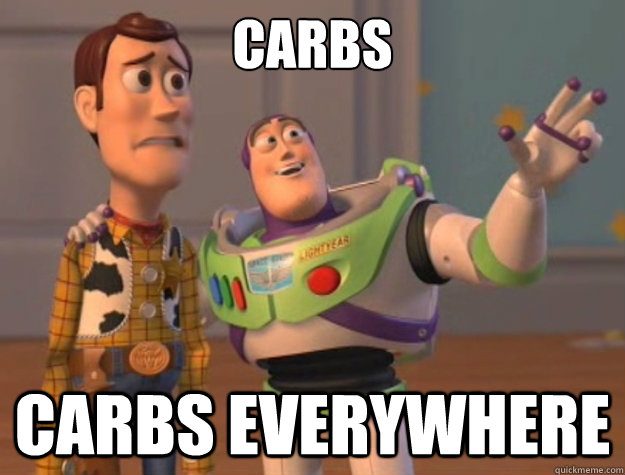
Cons
- You can’t eat any food you want, obviously.
- When transitioning into ketosis, one may temporarily experience flu-like symptoms due to the withdrawal from carbs. But this is easily solved by an increased intake of salt, bullion or bone broth!
- “Cheat” Foods that used to taste good, taste really shitty now.
- Bread tastes like cardboard, and junk food well, tastes like junk.
- You have to refuse most foods offered to you. Explaining to people why you can’t eat such and such opens up a bag of worms. People have beliefs in regards to nutrition on par with religion so they get super defensive OR feel guilt for eating carbs in front of you.
- ProTip: If the co-worker offers you the morning donuts, don’t say “I can’t have donuts anymore.” People will urge you to have one. (“Come on, not even one?”) Instead say “I don’t eat donuts anymore.” If you say you can’t have any, they’ll try to convince you that you could get away with having one. If you say you DON’T eat them because you DON’T WANT TO, then that’s a different scenario because people generally don’t have much to say to something you don’t want. It’s also positive reinforcement for YOU that you do not want it and not that you want it but can’t have it! Feel me?
- Social circumstances like drinking alcohol at a bar go out the window.
- Order a club soda on ice with a slice of lemon and straw to fit in. (Pro: You saved $12 for a god damn cocktail.)
- If you really want alcohol, you could order a rum with diet coke and you’ll be fine.
- In the list above, remember I said a glass of red wine or white wine is fine. And for hard liquor, unsweetened spirits of vodka, rum, gin, tequila, whiskey, scotch, brandy, bourbon, cognac are acceptable. A lot of people will drink a little bit of this stuff just alone on the rocks, or with a diet coke or club soda and lime.
- Basically, Social circumstances, like barbecue’s, on the other hand, usually means you’re eating their meat, veggies, guacamole and skipping all the chips/bread.
- Sometimes it’s hard to find a good option from a fast food restaurant. (But normal restaurants will always have good salad options. Just don’t get salad from a pizza place.) (Use KetoFinder or Calorie Cap apps)
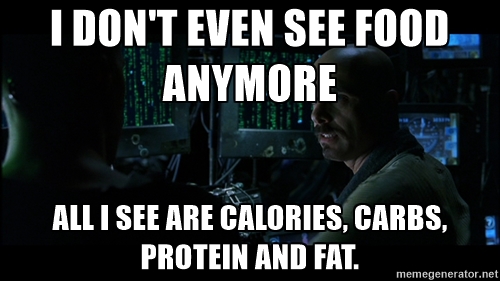
For a long time I counted my calories and because of that, I ended up knowing by heart the calories of almost all foods just by looking at them. I then refined the data in my head so now I know the macro ratios of most foods by heart as well. I’m sure that if I jumped into the keto-diet and tried to learn all these things all at once, it might have been a bit overwhelming, but everybody is on their own journey.
Here are my Progress Pics
While improving my physique is not a huge priority of mine, I have seen incredible changes in my physique simply from this diet.
During the start of this keto diet, I ate at maintenance-levels (~2,400 calories) while trying to stay under 50g net carbs and tracking my stuff using MyFitnessPal. After a few weeks of consistently staying under 50g net carbs, I completely stopped logging/tracking my food intake which was very liberating. That’s what’s fascinating about this diet, is that it allowed me to experience positive physique changes and continual development in my strength training without having to calorie-count (macro-count) for several months. (I’m really good at calorie-counting and love to do it and find it to be fun, not a chore, because I’m so efficient at it, but not having to do it constantly was a welcome change.)
I felt that practicing severe carbohydrate restriction did indeed reset my satiety/hunger/appetite controls because I was naturally not eating in excess of what I needed. I’m feeling that I naturally was eating slightly less than usual because the fat and protein were more satiating and the carbs were not there to entice me.
In previous fat-loss extravaganzas, I lost fat, but I also lost some muscle, which tends to happen if you’re on the lean side and eating at a caloric deficit.
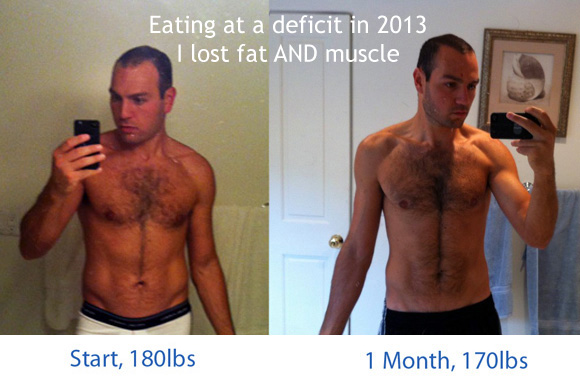
Weight loss from simply eating at a caloric deficit (Not Keto). Lost fat and some muscle.
On this keto diet, because it is muscle-sparing, I lost fat and retained muscle!
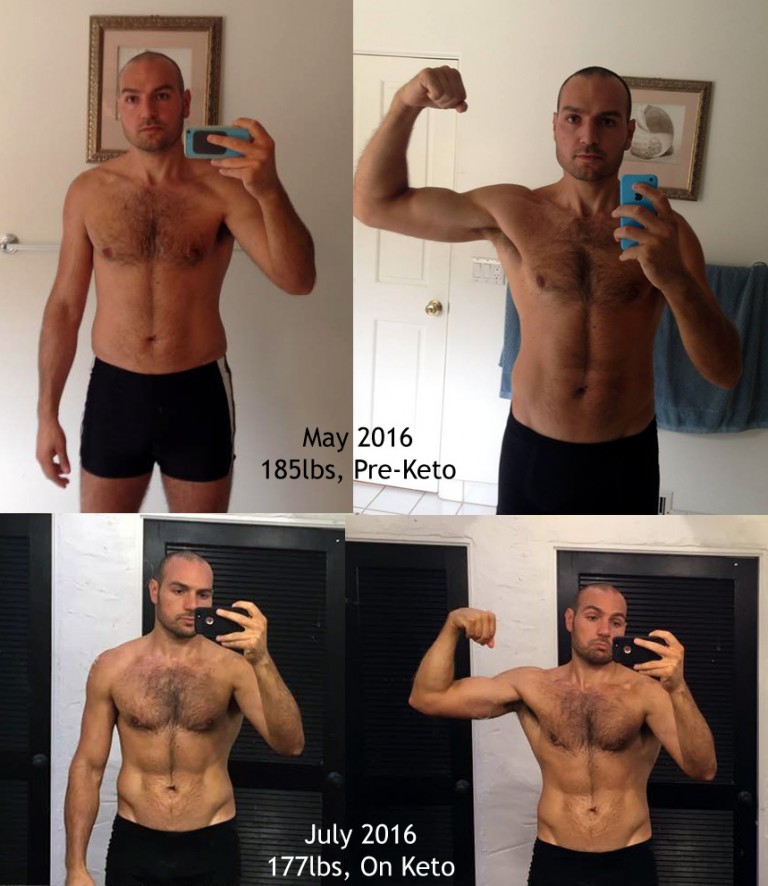
- Weight loss progress while eating keto. Lost fat and maintained muscle.Lost ~8lbs fat and seemingly no muscle loss. This is the best I’ve ever looked IMO and my strength training regimen has been the same. The only difference was the switch to keto. Understand that my main priority is not to look good. I’m happy with the way I look but because I do mostly bodyweight-exercises (as opposed to weightlifting), being leaner makes me feel like a super-human.In any case, my main priority is to ensure my overall health is good, I’m feeling good and able to recover well between workouts. My recovery between training sessions was (and still is) impeccable on this diet. Feeling like my joints feel FANTASTIC is important to me and they felt fine. Feeling like my body is not fighting an allergic reaction is important to me. Sleeping like a baby is important to me (don’t neglect your magnesium supplement). Having a better physique by getting my diet in check for health is only icing on the invisible cake.Side Note: On the flip-side, it all makes sense to me how so many people who eat high carbs, especially many vegetarians and vegans, become fat or “skinny-fat” meaning they may look skinny but they have a distended/bloated gut and because many don’t strength train, despite their leanness, they look weak as well.
Additional Resources / Recap of aforementioned recommendations
- Reddit is a great resource for more information
- r/keto is great and their FAQ is phenomenal in its information
- /r/ketorecipes for any recipes you want to look up or be inspired.
- ProTip: Go to either of these subs and use the search feature.
- Unofficial “tell me what to eat” post for breakfast/lunch/dinner/snack ideas
- Book recommendations:
- Basic Foundation: Gary Taubes’s Why We Get Fat And What To Do About It
- Basic Foundation: The Art and Science of Low Carbohydrate LIVING
- If you are athletic: The Art and Science of Low Carb PERFORMANCE
- Lyle Mcdonald’s first book, written in 1998, was called “The Ketogenic Diet” and it’s a fascinating objective view of the diet with over 600 scientific references from its time.
- Presentation/Podcast Recommendations:
- this talk by Dr. Jeff Volek (explains the science)
- this talk by Dr. Phinney (explains the science and gives practical advice)
- this talk by Dr. David Diamond (explaining the history very thoroughly and his personal story)
- this talk by Tim Noakes (explaining the science, history and his personal story)
- this talk by Dominic D’Agostino: Therapeutic Implications and Practical Application
Recap of product recommendations for proper electrolytes:
- Because the kidneys will excrete more electrolytes than retain while in ketosis, you need to be aware of the following:
- To avoid the “keto-flu” (or for an instant fix if experiencing it already):
- Everyday use this chicken bullion powder and mix it with water and enjoy! (Or use real broth!)
- Instead of using regular iodized salt, use Morton Lite Salt liberally cause it has half the sodium but more potassium and that ratio works better. (Note: If you have a history of kidney failure, heart failure or diabetes, or are taking medications, ask your doctor if this is okay.)
- Order this magnesium supplement and take 2 a day. It solves many issues, including sleep issues for many as well.
To end this massive post, I will say the following which you’ve probably heard before, but it bears repeating: A lot of people think that just because I workout regularly, it’s easy for me to lose weight. Nothing could be further from the truth. Your physique is determined 80% by your diet and 20% by exercise. But when it comes to CONSISTENT FAT LOSS and the ability to KEEP IT OFF, I think it’s ALL about diet. You CANNOT out-exercise a shitty diet. You cannot out-train a shitty lifestyle. It’s just not how it works. Being active has nothing to do with my physique changes. I’ve been very active for the past decade and my physique has fluctuated many times regardless of my activity-levels because it’s completely dependent on my eating habits and season (Winter/Thanksgiving/Christmas-times come to mind.)

If you are overeating, it’s simply not sustainable to “exercise the extra calories away” because when you realize how much work it takes to burn off a pound of fat, you start to realize that it’s MUCH easier to abstain from eating that extra snack than have to do intense cardio for a few hours. (Most people can’t even sustain that kind of effort even if they wanted to!) This is why I don’t think the recent craze of “Pokemon Go” is going to make a dent in the obesity problem at all. Walking is a nice relaxing thing to do, but it’s SO EASY to negate HOURS of walking with just 1-2 cookies.
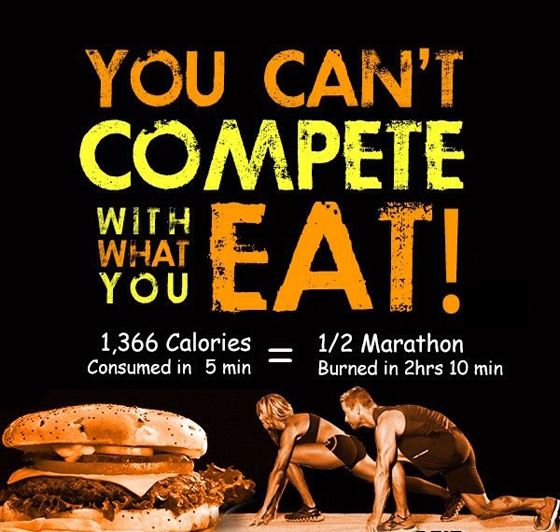
People are going to have to kill themselves with exercise if they don’t get their diet in check to not only burn off the extra calories but also burn enough to lose weight. It’s destructive, unnecessary and inefficient. If this topic intrigues you, read my article on why abs are made in the gym but revealed in the kitchen.
In the meantime, I’m glad to be writing again and I hope this massive post was of interest to you. Please leave a comment below and share your thoughts or questions and please share this with others!
Next Up: The question I keep getting lately is “What does a typical day of eating look like for you?” so my next blog post will be me sharing all the keto-friendly foods and simple meals I’ve been eating. Update: Here it is: What I Actually Eat.

Let’s Connect
The best way to stay up to date with the latest content and videos is to sign up for my newsletter!





